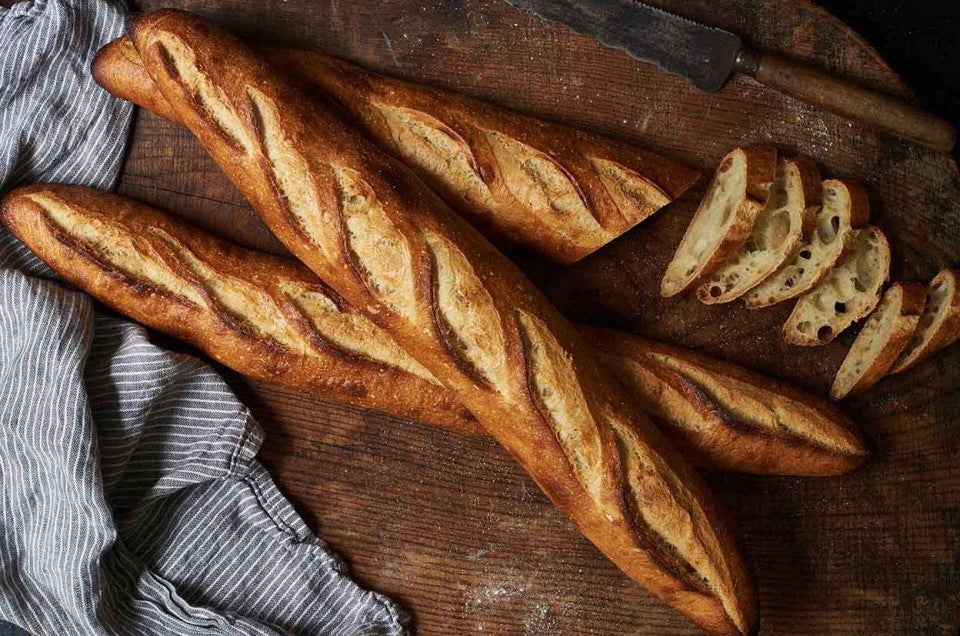


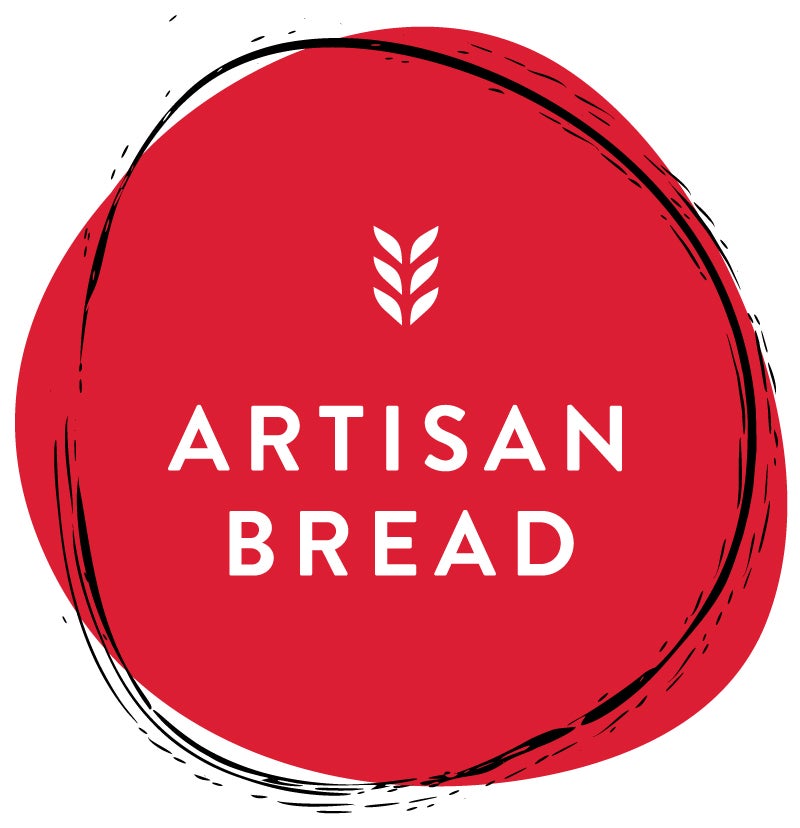 Our Artisan Bread series explores the world of professional-level bread baking and brings you more resources and guidance around how to hone your skills at true hand-crafted bread. You'll find tools, inspiration, and confidence to experiment and master what is perhaps the simplest, and the most complex, of baking genres: artisan bread.
Our Artisan Bread series explores the world of professional-level bread baking and brings you more resources and guidance around how to hone your skills at true hand-crafted bread. You'll find tools, inspiration, and confidence to experiment and master what is perhaps the simplest, and the most complex, of baking genres: artisan bread.
* * *
Welcome to baguette month in our Artisan Bread series! We’ve chosen baguettes as the focus of our second month because it’s a bread that truly exemplifies the importance of craft and technique. From the outside, a baguette is a simple mixture with few ingredients. But you and I know it’s more complicated than that.
I spoke to the challenges and rewards in my book, Breaking Bread, writing:
“Oh, the baguette. What could be so hard? In skating there is a triple-salchow: jumping from toe tip to land on one foot, on skates, on ice, no falling. In baking, the baguette is that jump. I say this not to discourage you, but only in order to frame its making, to acknowledge that the baguette is at the center of our craft; it is our basic benchmark of skills in the artisan bread world. I have made thousands and thousands and still hope, every single time I touch them, that they might be better, more consistent, and more beautiful.”

In the month ahead, we’ll focus on various aspects of baguette success, from videos on shaping and sourdough formulas, to a detailed blog post by Andrew Janjigian on what tools a home baker really needs, to a live Instagram talk where I’ll break down every aspect of the process and address common questions and challenges for all of you at home.
But before we dive into all of that, we should begin by stepping back and talking about the world of baguettes. For that, I turned (as I often do in matters of baking) to our director of bakery sales, Jeff Yankellow: one of the most talented bread bakers I know and a member of the only U.S. team to win gold at the Coupe du Monde de la Boulangerie (think of it as the Olympics of bread baking).

Jeff knows baguettes better than most — in the course of his job at King Arthur, he regularly consults with professional bakeries to help them achieve success with their own recipes by troubleshooting and offering assistance: from flour advice to shaping tips to thoughts on oven temperature or fermentation times. He's the go-to "bread whisperer" for professional bakeries of all sizes, from individual bakers using 50 pounds of flour a day to large-scale spots using 50,000 pounds of flour a day.
For today's blog, I asked Jeff a few questions about baguettes to guide home bakers looking to master the craft. In our interview that follows, he waxes poetic to me about — and gives wise counsel on — this iconic bread.
In other words, how broadly can we expand that definition and still call it a baguette? Can a baguette be 100% whole wheat? Where is the line between “baguette” and “baguette-shaped bread”?
That's a great question that forces me to offer up more questions as my answer. For topics in bread-baking like this one, it’s most important to me to find the place I want to mark as ground zero. But like many, I’m not stuck in the past; I absolutely feel it’s OK to adapt to current times, tastes, and demand.
In classic French cooking, definitions are more black and white. For example, if you want to make a hollandaise or velouté sauce, you look at Escoffier’s cookbook and that’s the standard for how it should be done. But for bread, there are references but there is no absolute book of standards. Many people would consider Raymond Calvel to be a “godfather” of French baking and of the baguette, but he tends to have held more influence outside of France — there’s ongoing debate about his acceptance for the use of ascorbic acid in baguettes in contrast to others who argued against it.
I’m not a total purist by any means. I make 100% whole grain “baguettes”, but to answer the question around a larger definition, I have to look back to the early 20th century when the baguette came into fashion and examine what it was then.
Records show us that early baguettes were long, skinny, yeasted, white, crispy on the outside, tender and moist on the inside, and full of complex flavor and aroma from long fermentation. But there are pitfalls in looking too much at history — during the mid- to late-20th century, when high-speed mixing turned the baguette into a tasteless crispy stick with a cotton white crumb, it didn’t reflect the original method at all, but it was still called a baguette.
So is a crispy, tapered loaf boasting an irregular tender crumb, long fermentation, and intense flavor but made with whole wheat flour closer to the original than that cotton white bread many people call a baguette? Probably.
But then you could argue that if the “original” baguette was yeasted, can we call a sourdough baguette a baguette? What about a gluten-free baguette?
In France, they solved the problem by designating different styles and methods with different names. Baguette or pain courant, which is what we typically call “French bread,” would be more of a commercial style (cottony texture and yeasted) whereas baguette de tradition would be more of the long-fermented style.
For most things in baking, I encourage bakers to be free to do as we please: interpret the original, adapt to the current times, and push the limits. But for something quintessentially French, so deeply rooted in French baking tradition, I do think we have a responsibility to look to the original to set a standard, which gives us a ground zero to interpret beyond.
In the United States, we’re less beholden to these traditions compared to bakers in France. Ultimately, we can call a long skinny stick a baguette and a flat square a ciabatta, but that doesn’t make them truly either of those breads.
I think to be called a baguette, the bread should reflect the defining characteristics of the original baguettes. It should be long and skinny (55 to 60cm would be traditional but is uncommon in these days of shorter baguettes) with a crisp crust, nice brown exterior color, and a moist, cream-colored crumb with an irregular structure. It’s best eaten within a few hours once it's out of the oven.
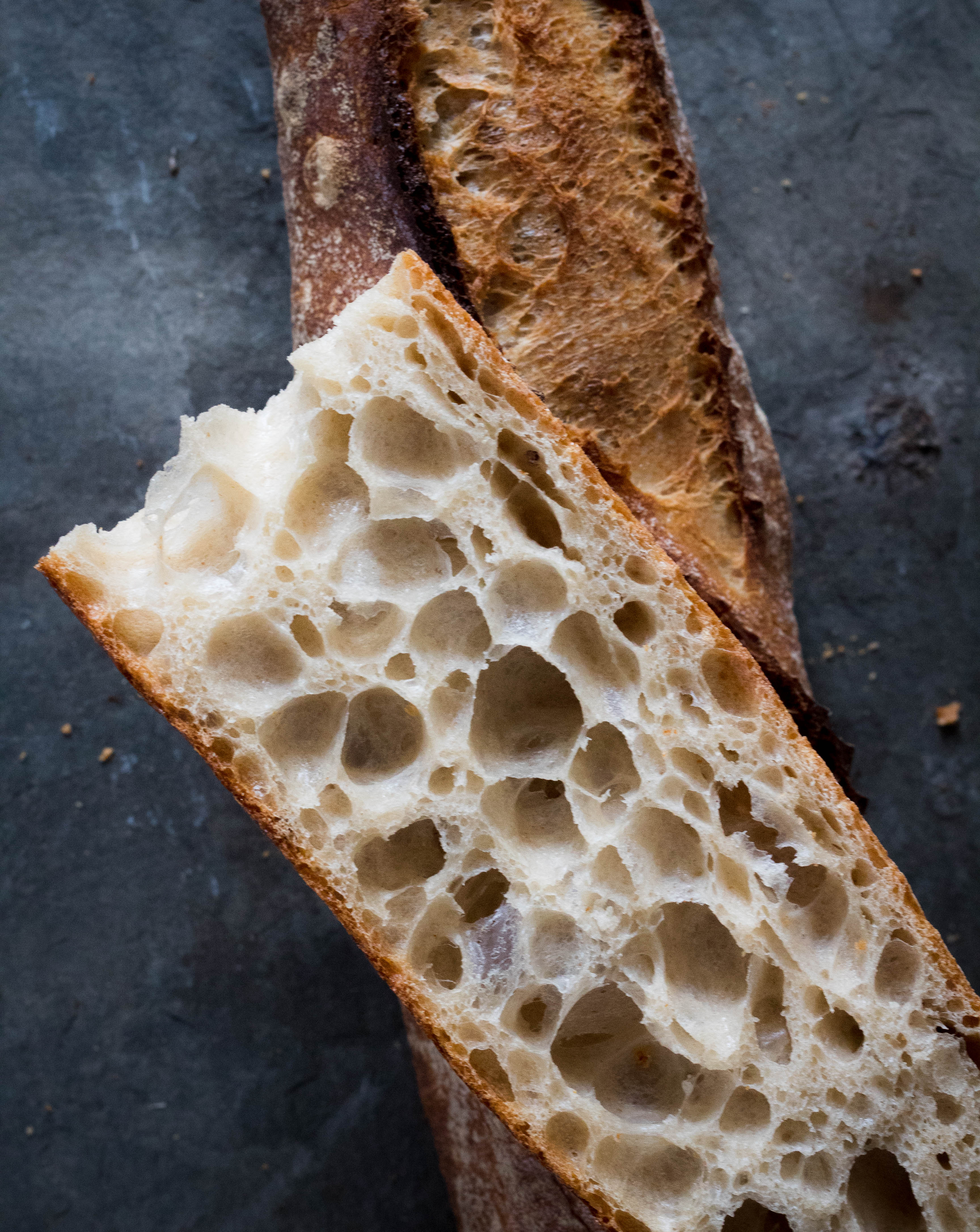
Pitfall 1: The biggest pitfall is true of many artisan breads, but nonetheless it remains the most common: not enough practice. Ask all the questions you want, take all the classes, read all the books, watch all the videos and social media posts … in the end, you need to touch and feel and bake and eat, over and over and over again. That is what will differentiate your level as a baker. The pursuit of “perfection” equals constant repetition.
Pitfall 2: Another pitfall is assuming that baguettes are basic, and therefore easy. The simplest things are often the hardest, and there may be no better example than the baguette. With only four ingredients, there’s nothing to hide behind. All faults will show themselves without hesitation. What faults could those be? Cuts that don’t open, a too-tight crumb structure, inferior shaping, poor baking (lack of color, lack of crust, overbaked, and so on), mediocre flavor, and bowing in the middle due to excess strength, to name just a few.
The baguette will humble you, but if you go in with humility, you will come out stronger for it. Practice, practice, practice. There is so much to learn by “perfecting” this one bread.
Pitfall 3: Choosing the wrong type of flour can be a problem. We’ve come a long way over the years in how bakers think, but I still see people with the mindset that stronger flour (higher protein) is always better for bread. King Arthur all-purpose is actually more than suitable, and it’s even a bit stronger than many French flours used for baguettes, so there’s no need to turn to bread flour or high-gluten flour.
Pitfall 4: Be wary of frustration impeding your success. Baguettes can be ego-crushers when you’re just starting out. Remember that the exercise of shaping a baguette will build a foundational skillset that will help you in making all other breads. The shape itself (long and skinny) is more of a challenge than most because it’s less tolerant than a small round or oval loaf. Even a small amount of weakness in the process (dough strength, shaping, proofing time, and so on) can trip you up. Learn from your mistakes and keep working at it. One day the switch will flip.
First, listen to the dough. Let it guide you. If the dough feels too soft or too dry you must adapt. If it isn’t strong enough after the intended time of fermentation, let it be and allow it to reach the destination instead of taking it at the exact time you thought it was supposed to be ready. Listen to your intuition. Ultimately, you must respect the gray area.
Second, evaluate the bread and connect the results to the process to learn from experience. Touch and feel and remember. This is easy to do at home, but in a professional bakery it’s extremely common for bakers to only see part of the process. That impedes learning. Here, home bakers are at an advantage.
This third answer may be my most important advice: Be proud of your baguettes!
Enjoy the fruits of your labor. Work within your means and maximize the results under those conditions. Don’t beat yourself up trying to replicate something you see elsewhere.
When I was working in bakeries, someone was likely to say something like, “Your baguettes don’t look like so and so’s baguettes … ” Well, that’s the intention! They’re a product of my vision and they reflect my style, and I love them the way they are. For the home baker, this is even more important. Don’t dwell on things you think are keeping you from “succeeding.”
Many of the trends seem to be influenced by what is happening in France. I haven’t visited since 2016 but from what I can see, the “best” baguettes are still those being made with yeast and fermented in the refrigerator in bulk overnight, then shaped and baked for sale within a few hours. If there is any room for debate, it’s around the choice of flour. T65 flour (a French artisan flour with slightly more ash than all-purpose; similar to King Arthur French-style flour) is the norm these days amongst French professional bakers, but there are arguments against it. Bakers use it because the higher ash content gives it additional flavor; the naysayers argue that what it adds is what it takes away: the purity of flavor of a “whiter” flour (which yields that sweet, nutty, buttery taste that’s indicative of a classic baguette in its finest iteration from the past).
I don’t think baguettes will look much different in the next decades. A baguette is a baguette. Perhaps different flours or some small trends will come and go, like a lighter or darker bake, but overall I think the genre will stay the same.
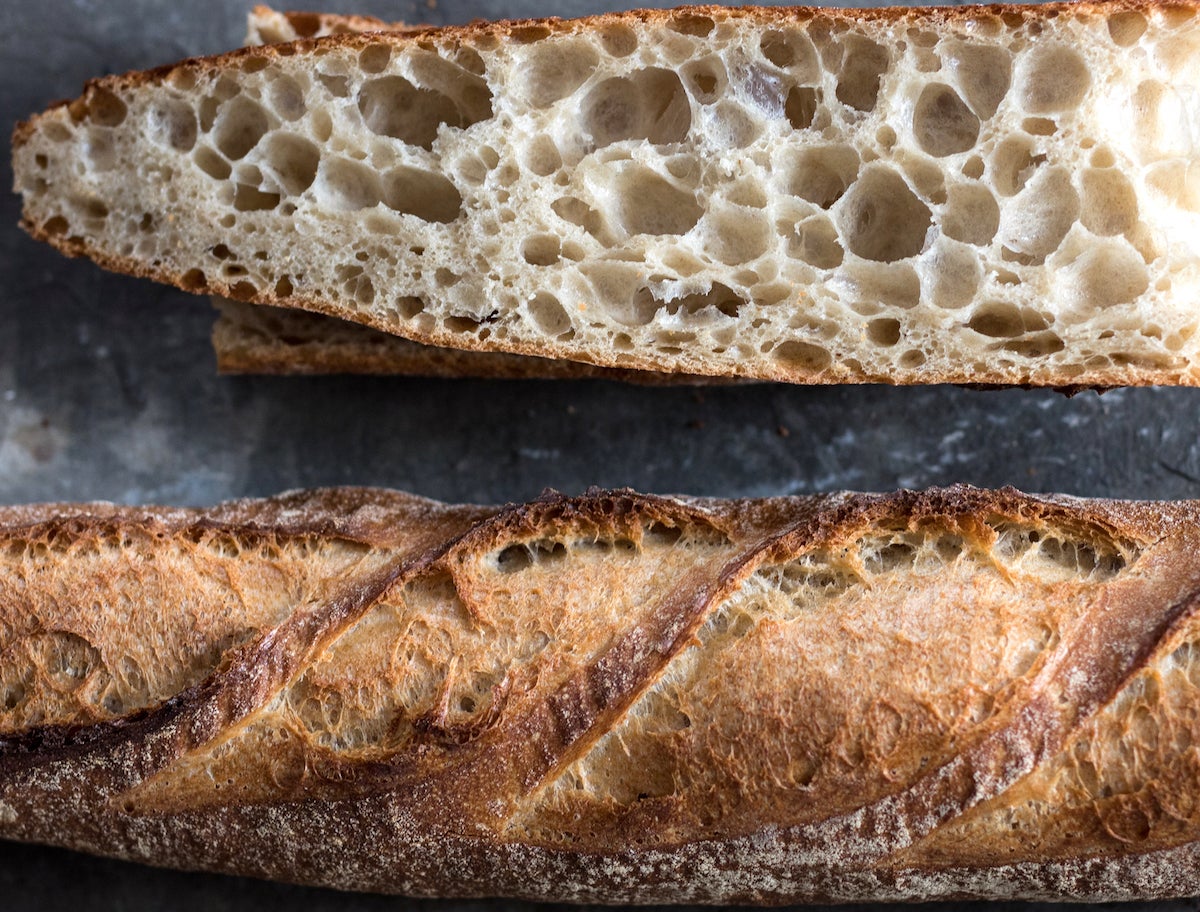
Conditions matter a lot, but at home the risk is much lower than in a professional bakery. And the risks are different. I’ve heard bakers say things like, “We don’t pay any attention to temperature and it works all the time.” This may be true but are the results consistent? Certainly not.
It’s less about how factors like temperature and humidity impact success and more about how the baker adapts. Focus on the signals and signs of success throughout the process and allow the dough to arrive at those benchmarks regardless of the conditions.
For example, temperature is extremely important for consistent fermentation and results. In the home environment, it’s crucial to tweak as needed because you’re working with small batches of dough, which are more affected by variation. Let’s say I was in a bakery mixing a dough that I would normally refrigerate after 1 hour at room temperature. At home, on a smaller scale, I may need to leave that same dough out for 2 hours, because the dough will get cold much faster and fermentation will slow down. At home, I have to manipulate time and temperature to arrive at the same place as I would in a big bakery.
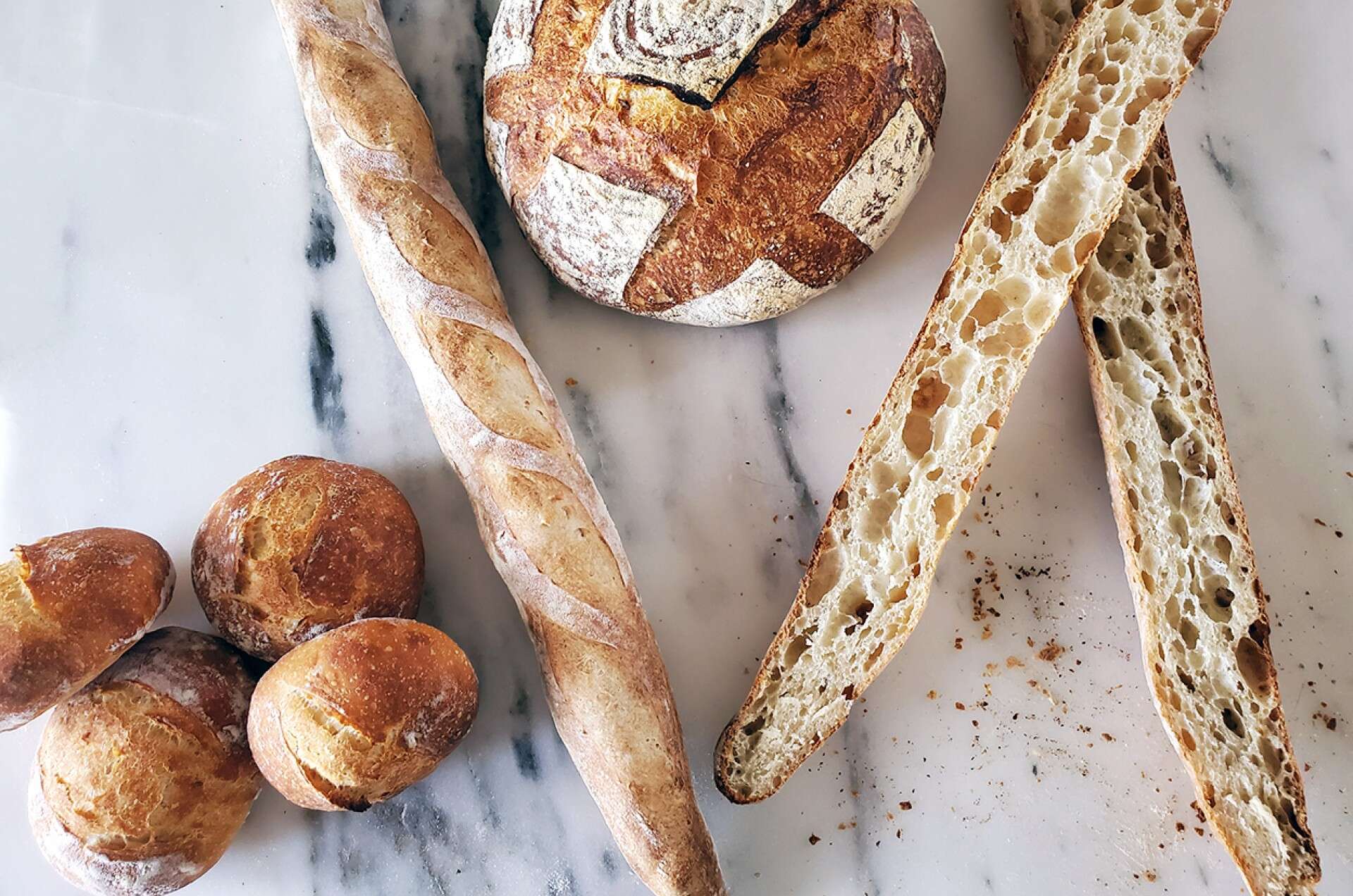
It’s an involved process to get there. Good fermentation, good hydration, proper handling, shaping, baking, steam (expansion in the oven), the right choice of flour — it all matters, and one misstep can nullify many other correct steps.
The answer is kneading and folding — and knowing which one to use in which circumstance. It all depends on what style of baguette you want to make. In bakeries, the choice of technique has a lot to do with production schedules and labor. Folding can be a lot of work when you’re making thousands of baguettes, but at home we’re more free to choose.
Start by deciding if you want to use a machine (stand mixer) or not. If yes, then you can rely on the machine’s energy to do serious kneading to build strength. If not, then you’ll want to build strength in your dough by folding.
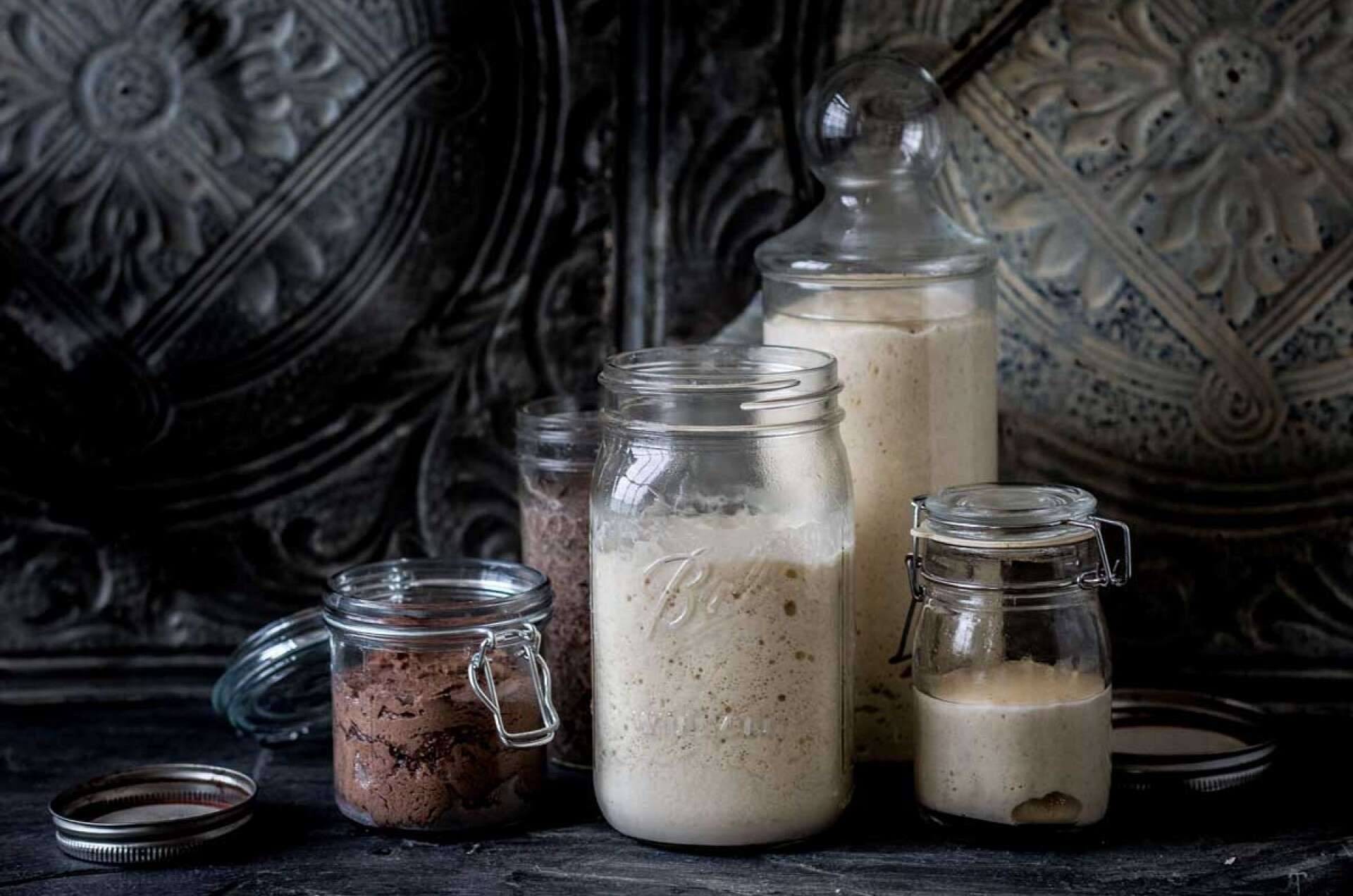
Are you using a poolish or other preferment? If so, then you may mix/knead a little and fold a little.
Do you have all the time in the world? If yes (lucky you!), then a little kneading with a long fermentation and some folding will be your first choice. There’s a huge spectrum with many scenarios from end to end that will all result in a great baguette.
There’s no right or wrong answer. Personally, I love the flavor of the direct method (meaning no preferment is used and it’s all done in one step). I lean into about 3 to 3 1/2 hours of bulk fermentation at room temperature before dividing and shaping, and then baking the same day — a similar approach is 1 hour of fermentation at room temperature and then an overnight rest in the fridge.
For me, the baguette should showcase the purest flavor extracted from the wheat. I believe the direct method gives you that. More complex fermentation methods bring more varieties and levels of acidity and aromatics into the mix — it’s a more nuanced flavor, but for me it clouds the end result with its complexity. But in the end it’s a matter of personal preference. "Best," "better," "good," or "bad" are all relative.
That being said, it’s helpful to set out some guiding principles for success. If you’re using fermentation as a tool for both flavor and strength, I would argue that 2 hours should be the minimum to achieve a nice baguette (with no preferment.) But take it one step further, at 3 hours and beyond (either with or without preferments), and the results will start to grab your attention. Organic acids, which bring flavor and aroma to the eating quality, don’t start to accumulate until the fermentation process is well on its way. Two hours is the minimum time at which these will begin to present themselves. Push it longer, and they’ll develop even more.

In 1996 I spent 10 weeks living in Paris. I lived in a hostel around the corner of what would eventually become, years later, Eric Kayser’s first bakery. I loved that neighborhood, and I ate a lot of good bread before I knew much about it, as I was studying cooking then.
The most intense memory I have was stopping for a baguette from a nondescript bakery, with no fancy name or baker, on a narrow side street. It was so incredibly chewy your jaw would be sore for hours after eating it. It was the best baguette I had ever eaten. I liked everything about it, and that’s all that mattered.
In France, hot bread comes out of the ovens in the morning and the evenings. You’ll see men and women and children walking down the streets with baguettes under their arms. I was used to the United States where bread was sold in a bag or put into a bag before being handed to me. But here, all over the polluted streets of Paris people walked around with baguettes protected by nothing more than a small piece of deli paper wrapped around the middle where their hands gripped the bread. That was real life, real bread — meant to be torn into and savored.
Jeff’s insight is invaluable for all home bakers tackling the epic — and lifelong — journey of making baguettes. Much of his advice can be applied to artisan bread baking (and even life at large). Keep it all in mind as we dive deeper into the step-by-step of baguettes more this month.
If you missed any of our previous month of Artisan Bread, which focused on baking with whole grains, we encourage you to take a look, from our videos — with 5 tips for high-hydration doughs and a walk-through of making anadama bread — to our overview blog and our profile of a Maine baker.
Cover photo by Liz Neily.


November 29, 2022 at 11:38am
When will you start shipping to Canada again?
November 30, 2022 at 2:39pm
In reply to When will you start shipping… by Bill Snider (not verified)
Hi Bill, though we have done limited international shipping in the past, high fees and increasingly complex logistics have challenged our ability to continue doing so. As such, we’ve regretfully discontinued all international shipping. While we’re unable to extend our products beyond US states and territories, we remain sincere in the belief of the power of baking and hope you’ll continue to join us in our kitchen via the free and robust resources we make available online such as our recipes, blog articles, and baking guides.
June 10, 2021 at 2:12am
Dear Martin,
I wish I could send you photos of my baguettes and pain d’épí de blé. After many less than perfect results, (you warned about this) I am finally turning out loaves that look like baguettes and pain d’épí de blé both outside and inside. They taste good too. I am fascinated by your videos not only as venues for learning a new skill, but also, as a retired teacher, by your interaction with your son. He may not know it now, but I am sure they will be stored in his long term memory, as treasures from his childhood.
Thank you for making these videos.
FYI: I am 81 years old, and you have brought joy to an old lady.
March 30, 2021 at 6:19pm
Hi, This is Dan in San Diego. Do you prefer using commercial yeast, sourdough starter, or a combination? Any thoughts?
March 31, 2021 at 11:34am
In reply to Hi, This is Dan in San Diego… by Dan Connolly (not verified)
Dan, they each have their place, sometimes alone and sometimes in combination.
March 30, 2021 at 10:20am
What an interesting read. Can’t wait to start baking.
March 24, 2021 at 6:24pm
I may have missed this but I see no mention of baking methods, I know the baguettes featured in this article were not baked in a home oven, so what can we home bakers realistically expect in making baguettes?
March 26, 2021 at 2:42pm
In reply to I may have missed this but I… by Kathy (not verified)
Hi there, Kathy! We'd recommend checking out Andrew's new Essential baguette tools and techniques blog article that just come out today as a part of our Artisan Bread series. We hope this can help!
March 23, 2021 at 5:14pm
Great article. My challenge is to learn from the missteps. Yeast wrangling is not as easy as it seems. Thank you for this learning opportunity.
March 18, 2021 at 10:33pm
Thank you! Looking forward to the rest of the series....
Pagination